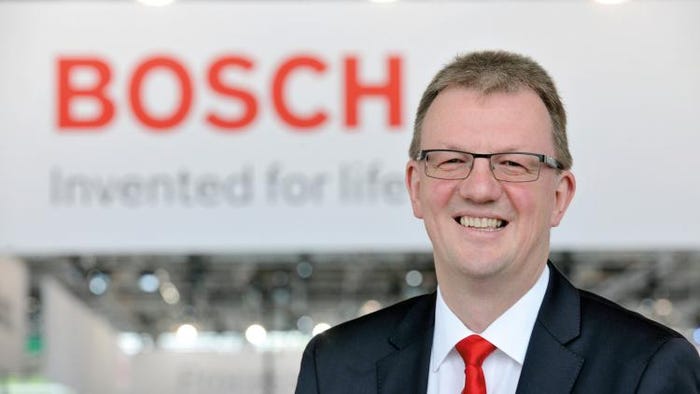“Hey, Siri. Does the cartoner magazine need to be refilled on Packaging Line 4?” With artificial intelligence (AI)—a.k.a. machine learning—and voice activation, packaging line operators could be more aware of what needs to be done and when. Would that better prevent costly downtime? Would it increase productivity without having to hire more hard-to-find skilled workers?
Too far-fetched? I don’t think so, especially considering that:
• Voice-directed warehousing was introduced in the late 1990s, and is seeing a rapid rise in adoption;
• Advancements in life science due to artificial intelligence and machine learning continue at a rapid pace;
• Consumer acceptance of voice-enabled assistants continues to rise. According to CNBC, Amazon’s Echo Dot, which gives people access to voice-assistant Alexa, was the best-selling item during Amazon’s Prime Day 2017 (July 10).
This type of technology transfer could yield positive results for packaging lines. (Photo above is Designed by Freepik.com.)
What do you think?
Take our short poll and tell us what you think about the practicality of voice technology for packaging machines/lines. CLICK HERE TO VOTE NOW!
Packaging Digest posed this topic to select exhibitors at interpack, the world’s largest packaging show, in early May 2017. Here is what top executives (see full bios at the end of the article) at a handful of leading packaging machinery manufacturers think, as they weigh in on the viability of incorporating voice-enabled technology on packaging systems and lines:

Riccardo Cavanna, CEO, Cavanna Packaging: Theoretically, voice activation is an interesting feature because hands-free is something that our customers request, especially on a production line to manage packaging machinery. Hands free for changeover, without using tools, is a must and that’s why we have introduced [at interpack] the new ZeroX flow wrapper, a tool-free machine.
Here where we are standing in the booth [at interpack], it’s quite crowded and noisy. And in a production area, there is noise everywhere from machinery. So, voice control could be a very interesting but the technology has to be able to recognize my voice in a noisy environment. The Siri technology is one benchmark we have. Even in a situation like this [in the booth], it’s difficult to recognize your voice.
So, it’s a matter of technology.
The second point is security. In a pharmaceutical plant, our HMI [human machine interface] has to log every single person who has made some change. Even in the food industry, that [type of security] is coming more and more.
If I can tell something to the machine by voice, it might not be so safe because voice is not like a digital fingerprint or a security card. Anybody could tell something to the machine.
So voice activation on a packaging machine is a possibility but there are security and technical challenges to be solved.

Brian Dillman, area sales manager, East, Universal Robots USA Inc.: I can only comment from the robot perspective and not from packaging machinery overall.
The idea of voice-activated robot systems is intriguing from an ease-of-use perspective. The other side is safety. Safety and security concerns have password protection to make sure no one without authorization makes changes to a program. Imagine the risk of having a system with voice recognition making adjustments on the fly without validating the person providing the instruction.
I expect efforts are being made to make robots more intuitive and provide self-learning functionality. Voice activation may come along the same lines, but the safety experts will have to evaluate how to make it secure and tamper proof.
Alexa is great, but she can't tell if it is my wife or the local TV news sometimes. Voice control will need more sophistication to make it viable.
Martin Prakken, CEO, BluePrint Automation: To be honest, I don’t see a huge need for this, as there are so many other things that can be made so much more user-friendly. HMI’s, for example, are still not as intuitive as an iPhone.

Doug Stambaugh, svp, Bottling & Capping Group, Pro Mach: I have not seen voice-recognition technology utilized anywhere on packaging machines or production lines. Currently, we have not had any requests for it from our customers. Will it migrate to packaging machinery and packaging lines? Possibly. Most of our customers’ current focus is getting more efficiency from their current equipment and adding flexibility to handle the growth in SKUs [stock-keeping units]. Not sure how voice recognition helps with this, but who would have predicted the success of Alexa and Siri.

Uwe Harbauer, member of the executive management, Bosch Packaging Technology: That's an interesting question. I haven't seen any voice recognition applications yet. I reckon it's hard to implement in practice, since packaging facilities often feature a high volume of noise. This makes it difficult to prevent voice recognition errors that could hold up production. This would certainly counteract the benefits of a self-explanatory HMI.
At this point in time, I don't see voice recognition being applicable in packaging, and I've certainly not seen it on the exhibition floor (at interpack). I think voice recognition would be very difficult to use when packaging pharmaceuticals or sensitive products that require cleanrooms or protective and hygienic operator gear. These conditions can distort voices.
But from a technological standpoint it's certainly possible. It shouldn't be that much of a challenge to add it into an HMI, and it would be affordable, too. We already use voice recognition technology on a day-to-day-basis, in cars, in smartphones. Why not in an HMI 4.0 application? I think it would be possible. The question is, is it necessary and practical?
Do you need or want voice-enabled packaging machinery? Take our poll now by CLICKING HERE.
Our panelists (alphabetical by last name):
Riccardo Cavanna became CEO of Cavanna S.p.A. in 2004, after having served as a member of the board of directors since the year 2000. During his present term, Cavanna has grown the company internationally by opening a manufacturing plant in Brazil and another one in the USA. Additionally, Cavanna is the vp of UCIMA (Italian Association of Automatic Machinery for Packing and Packaging) and president of Ipack-Ima’s board of directors, the leading Italian packaging trade fair, in a joint venture between UCIMA and Fiera Milano. He is also a member of the PMMI Global Marketing Committee in the USA.
Brian Dillman, area sales manager, East, Universal Robots USA Inc., manages the company’s expanding sales channel network in the Eastern United States. He joined the cobot market leader in 2016, bringing with him three decades of sales experience with increasing leadership responsibilities, including positions with KUKA, Motoman and several systems integrators where he sold welding, material-handling, loading, dispensing and assembly automation solutions. Dillman joined UR to be part of what he considers to be “the most transformative robot company to arrive in the market in the last 25 years.”
Uwe Harbauer has been a member of the executive management of Bosch Packaging Technology and a member of the managing board of Robert Bosch Packaging Technology GmbH since January 2017, with responsibility for sales and the Pharmaceuticals Business Unit. He joined Bosch Packaging Technology in 2000 as head of sales for the Business Unit Pharma in Crailsheim, Germany, then served as head of Business Unit Services in Beringen, Switzerland, in 2006 before returning to Crailsheim in 2013 as head of Business Unit Pharma. German born, Harbauer earned a degree in general mechanical engineering from the Technische Universität Darmstadt in 1990.
Martin Prakken became CEO of BluePrint Automation in 1999, after having joined the company in 1990 and served as president of the company’s U.S. division for five years before his promotion to CEO. BluePrint Automation BV was founded in 1980 to “supply the ‘missing link’: Automatic case packing of non-rigid packages,” according to the company’s website. As CEO, Prakken manages the U.S. division—BluePrint Automation Inc.—and the sister company, BluePrint Automation, BV, located in The Netherlands.
Doug Stambaugh is svp of Pro Mach's Bottling & Capping Business Line, one of the company’s key growth platforms. In this role, he is responsible for overseeing the operations and global commercial development for the business line, which includes the Federal and Pacific filling brands, the Zalkin capping brand and the Pace container handling brand, as well as numerous international sales and service offices. A 30-year veteran of the packaging industry, Stambaugh has a broad base of experience in the global consumer packaged goods market from packaging through the supply chain. Prior to joining Pro Mach, Stambaugh served as general manager of ITW Warehouse Automation, where he managed international operations and was responsible for global growth of ITW's warehouse and supply chain automation. Prior to that he served in senior leadership roles at Hartness Intl. as both general manager of integration and vp of global sales.
***************************************************************************************
MinnPack 2017 (Nov. 8-9; Minneapolis) celebrates its 15th year to bring you the latest developments in all things packaging as part of a comprehensive advanced manufacturing event. Sign up today to attend!
About the Author(s)
You May Also Like




